Ghost Hill Cellars captivates centuries-old miner
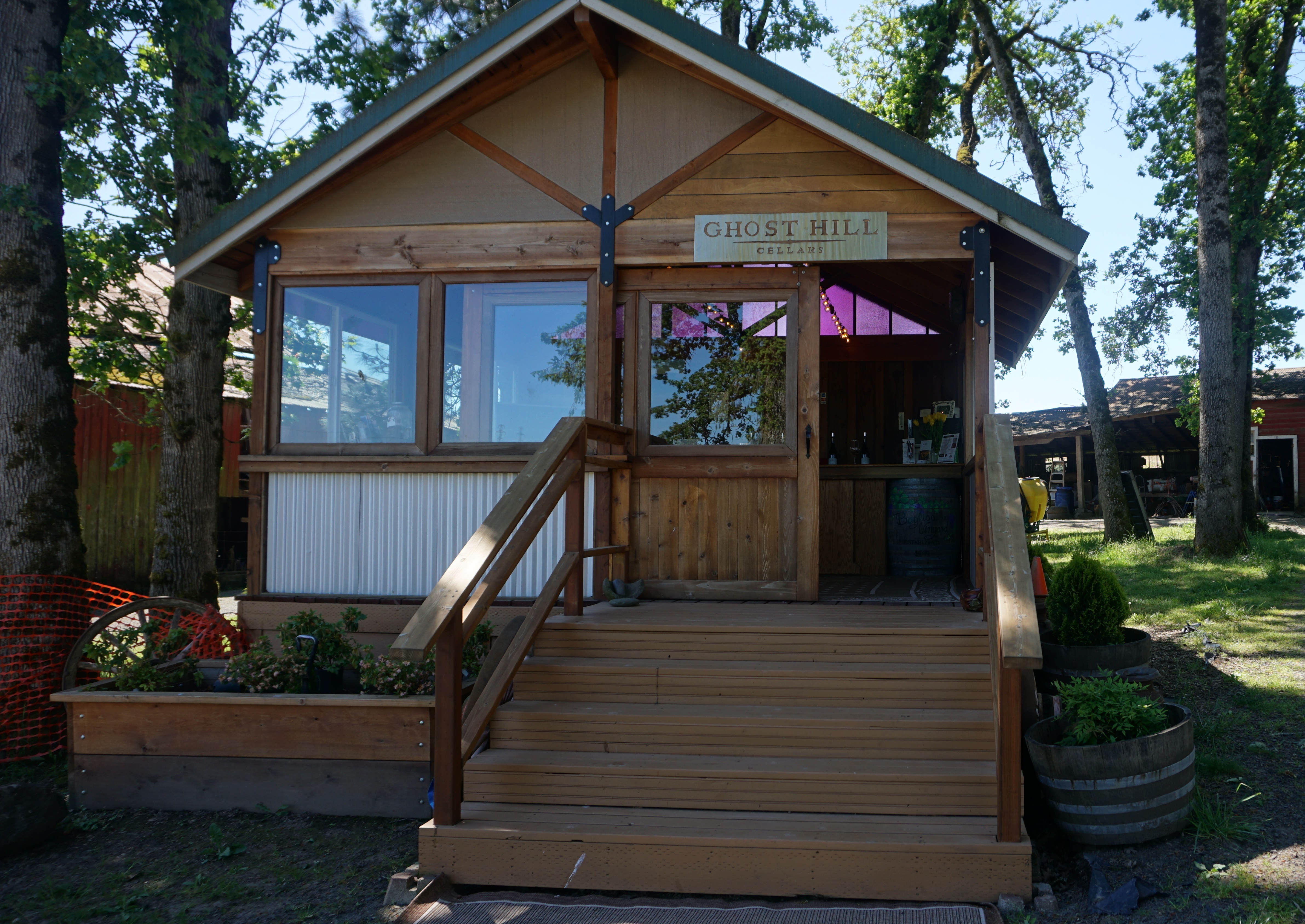
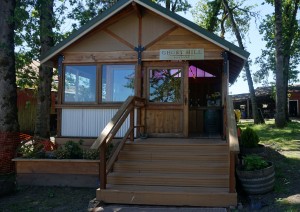
Seventy year-old handmade glass, a portion of the altar floor and a barn door from Our Lady of Guadalupe Trappist Abbey were integrated into the tasting room of Ghost Hill Cellars. Dan Eierdam
Everybody loves a good ghost story. What better to pair it with than wines earning high marks in Wine Spectator, Wine Enthusiast and Vinous?
Back in May I had the pleasure of a Ghost Hill Cellars vineyard tour courtesy of Mike Bayliss. As we rode alongside the rows of his fourth-generation farmland in his work horse of a truck, he pointed to a rather lonely-looking tree standing sentry over his 237 acres of fertile soil.
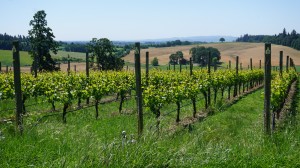
The lone tree on Ghost Hill holds a nearly two centuries old legend as it stands sentry over captivating views of vibrant clover, wheat, oats and grape vines. Dan Eierdam
“The story goes,” he said, “that a main thoroughfare cut right through here in the late 1800’s. Men on horseback would ride along, up that hill and continue on their way.”
One night a miner made camp there. While he was sleeping, someone came along, killed him and his horse, stole his gold and disappeared into the night. Legend has it people see the slain miner walking around up there looking for his gold. I say he simply couldn’t be pulled away from the captivating view of vibrant clover, wheat, oats and grape vines that hill affords.
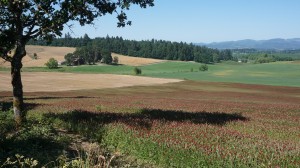
In the late 1800’s a miner was slain on Ghost Hill. Legend has it people see him walking around looking for his gold but I say he simply couldn’t be pulled away from the captivating views. Dan Eierdam
Regardless, the current tasting room that he and his wife, Drenda, pour from has its own historic appeal. Seventy year-old handmade glass was taken from Our Lady of Guadalupe Trappist Abbey literally up the road and the counter is a portion of the altar floor circa 1954. Mike’s affinity for the Trappist Abbey comes from years working there and, in the process, befriending Brother Carl John Benedict who passed away earlier this year.
While the Bayliss family continues to farm this slice of heaven that’s been in their family since 1906, nearly 16 acres was planted to vine in 1999. Today those grapes produce over 1,200 cases of wine that are being crafted into an expressive and versatile lineup of pinot noir.
2013 Pinot Noir Blanc – A fuller mouth feel is attributed to white wine derived from red grapes. Six months of lees stirring builds on that weight. The result is a medium acid wine ideal for rich fish like salmon, crab or lobster as well as pasta dishes with cream sauces or cream-based soups with pinot noir-loving ingredients like mushrooms and asparagus.
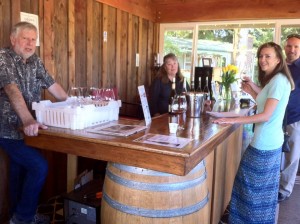
Back in May I had the pleasure of a Ghost Hill Cellars tasting courtesy of Mike and Drenda Bayliss. Ghost Hill Cellars
2014 Pinot Noir Rosé – Wine in contact with the skins for 15-18 hours results in a slightly salmon color. It’s a true patio wine with hints of strawberry and spice. Like the little black dress, the versatility of this rosé takes it from fruit, crudité and cheese platters (play on the pinot with smoked variations), to the traditional Thai and curry dishes so oft-recommended.
2011 Pinot Noir – A cooler vintage, Mike said this was initially a hard sell to wine critics but, like 2013, these are aging beautifully and it was my favorite of the tasting. It cries out for mushroom anything (soup, risotto, stroganoff) to complement the fabulous forest floor aromas. A gorgeous Willamette Valley representation, in my book.
2012 Bayliss-Bower Pinot Noir – Drawing high marks earlier this year from several respected sources, this is an elegant pinot. A blend of four clones, the warm notes from the vintage make it approachable and velvety. Notes of cherry and hints of cocoa marry nicely with a variety of meats including pork, chicken and grilled fish.
2012 Pinot Noir Prospector’s Reserve – Selected from the oldest plantings of the vineyard, this is a weightier version of the previous pinot. More new French oak adds to its complexity. Up the culinary anty with pinot noir-infused sauces, sprinkling truffle shavings over meats, preparing salmon alder-smoked and highlighting in-season fruits like grilled peaches alongside pork loin.
**If you like what you’re reading, follow Corks & Forks by clicking the ‘Follow’ button or follow Corks & Forks on Facebook or Twitter @WACorksandForks.
